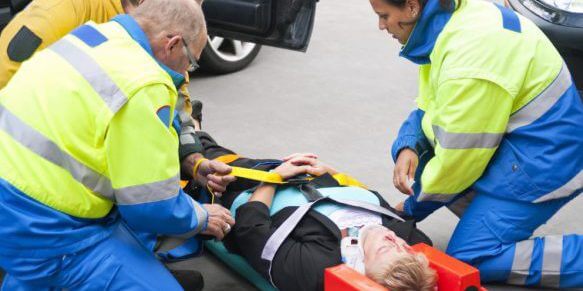Rescue Task Force Vs. Tactical Medics: Understanding the Role of an Emergency Medic

During an active shooter situation, the wounded have to be taken care of as quickly as possible. In the past, the custom for emergency medical personnel was to stand on the sidelines and wait until the police had completely secured the situation before rushing in and trying to save as many lives as possible. Nowadays, however, there are new types of emergency medics entering the scene. Tactical medics and rescue task forces are medics who are equipped with body armor and weapons, and have the ability to fire upon the shooters should they encounter them.
These two types of emergency medics are similar in their objectives, but they also have some key differences. Tactical medics are trained as part of a law enforcement team and go wherever their team goes. A rescue task force is different in that it is quickly formed together during the emergency and reports to local law enforcement for instructions. Whereas tactical medics follow the law enforcement team directly into the thick of an unsecured shooter situation, rescue task forces come in immediately after an area has been secured to treat the wounded.
Tactical medics will usually be wearing the same uniform as whatever law enforcement they show up with, while rescue task force members will wear whatever their daily uniform is, be that fire department, law enforcement, or medical personnel.
A rescue task force is the main team charged with treating the wounded on site and getting them to a collection point for victims. They will arrive on the scene and immediately begin assessing the severity of injuries and performing life-saving interventions. Rescue task forces need to use a checklist before entry to make sure they address the issues that need to be taken care of. The rescue task force should train collaboratively with local police and fire departments and develop drills, protocols, and procedures for a shooter situation.
Tactical medics train with a law enforcement team, such as SWAT to enhance their abilities on the scene. Tactical medics will meet at a briefing point with the rest of the team and review the target location as well as mission goals and subjects. Tactical medics might work with a local medical transport provider to make sure there is an ambulance located near the site of the shooting.
Often the tactical medic will meet face-to-face with other EMS personnel and provide support when it comes to logistics. The most frequent care doled by tactical medics is usually bandages and pain medication. Although they aren’t the first choice for treating wounded victims, they also need to know how to provide immediate care to those, who may require it.
Emergency medical personnel are gradually improving their response times to emergency shooting situation. The days of a weak emergency medical team being set up just outside the perimeter of a shooting scenario and forced to wait until the area is secured to provide medical care are coming to an end. With the introduction of rescue teams and tactical medics, medical personnel can enter dangerous areas much quicker and neutralize the perpetrator themselves if need be. While they both have the same objectives, both types of medics go about their business differently.
In recent years it is becoming more and more imperative to have an emergency evacuation plan and the proper tools at your disposal. Adding an Evacuation Slyde to your safety equipment and procedures will increase your ability to handle various situations. Especially in large crowds, situations can become instantly chaotic and disrupt potential rescue efforts.
The traditional sleds that are currently being used are difficult to maneuver and can take a long period to remove the injured from the situation. The Evacuation Slyde has been designed so that a single person can carry multiple sleds into an emergency situation and remove numerous injured regardless of their stature.
